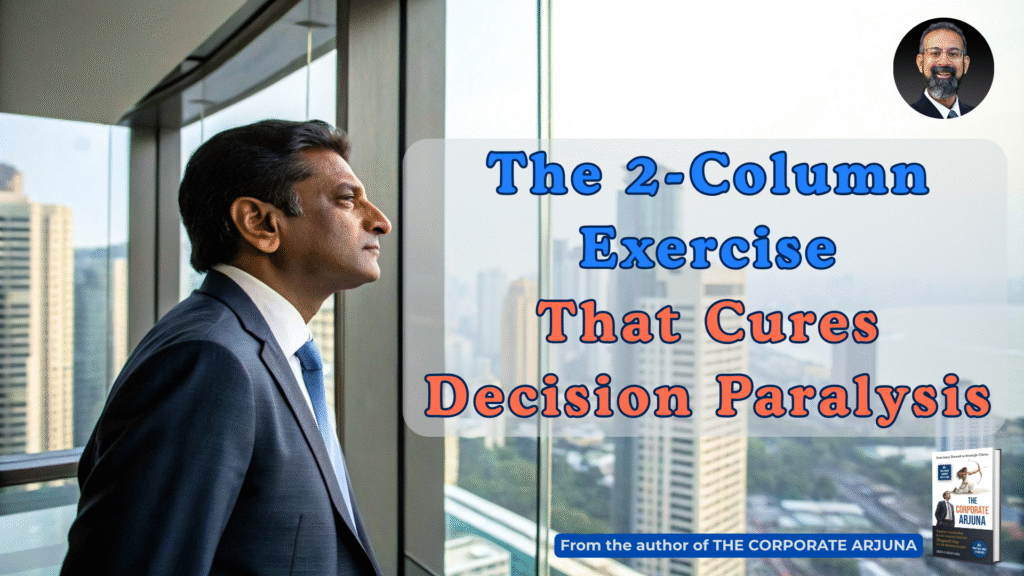
We’ve all been there—standing at the edge of a decision that feels too heavy to move forward. Whether it’s a career shift, a major investment, or a high-stakes leadership call, the fear of choosing wrong can freeze even the most capable leaders.
This isn’t just hesitation—it’s decision paralysis, a silent but widespread challenge in modern leadership.
Traditional tools often fail us here. A simple “pros and cons” list treats every factor as equal, when in reality, some choices carry an emotional, ethical, or cultural weight that numbers alone can’t capture.
Think about it:
- Does a 10% profit increase outweigh the human cost of layoffs?
- Can the prestige of a lucrative client justify compromising your company’s core values?
The real problem is not the lack of data—it’s the lack of clarity in weighing the whole truth of a decision.
Enter the “Chariot View” 🛡️
To find perspective, let’s turn not to modern case studies but to an ancient one: the opening of the Bhagavad Gita, a 3,000-year-old text.
Arjuna, a warrior, faces the unbearable cost of battle. Caught between duty and humanity, he drops his bow, paralyzed by the gravity of his choice.
His mentor, Krishna, doesn’t offer a quick solution. Instead, he drives Arjuna’s chariot to the very center of the battlefield—forcing him to see everything clearly: both the glorious possibility of victory and the painful consequences of conflict.
That vantage point is what I call The Chariot View—a timeless framework that requires leaders to look at the full battlefield before them. Only then can they act with clarity rather than fear.
Modern research, including work shared in Harvard Business Review, supports this truth: when leaders expand their perspective, they reduce biases and strengthen the quality of their decisions.
How to Apply the Chariot View Today 📝
You can replicate this powerful insight with a structured exercise—far beyond a typical pros and cons list.
1️⃣ Create two starkly named columns in a document:
Column 1: The Promise
In this column, list every single positive outcome with optimistic detail. Don’t hold back. This is the view from one side of the battlefield.
- What is the full financial upside?
- What market position will we gain?
- What strategic advantages will this create for the future?
- What is the personal or career gain for the team?
Column 2: The Peril
Now, with brutal honesty, list every negative outcome and human cost. This is the view from the other side of the battlefield.
- Who will be negatively impacted? Layoffs, team disruption, etc.
- What cultural damage might occur?
- What promises will be broken, to clients or to your team?
- What are the deepest ethical compromises or long-term risks?

From Fear to Presence 🌟
Here’s the secret: the exercise doesn’t make decisions easy. It makes them clear.
Once the unknown is illuminated, fear transforms into focus. That’s when a leader steps into the role of a commander, able to navigate terrain with awareness rather than anxiety.
This is what the Chariot View offers: not an escape from hard choices, but the courage to face them whole.
From Seeing the Battlefield to Leading Through It
The Chariot View is just one tool in the wider leadership framework I share in my upcoming book, The Corporate Arjuna. Across 18 chapters, I explore how timeless wisdom and modern research come together to help leaders move from paralysis to purposeful action.
📘 If this resonates, you can download the first chapter for free here: Download The Corporate Arjuna